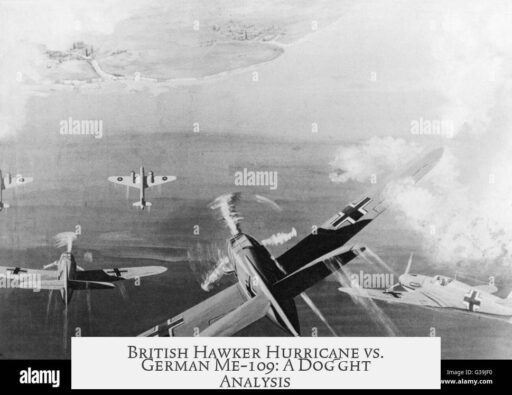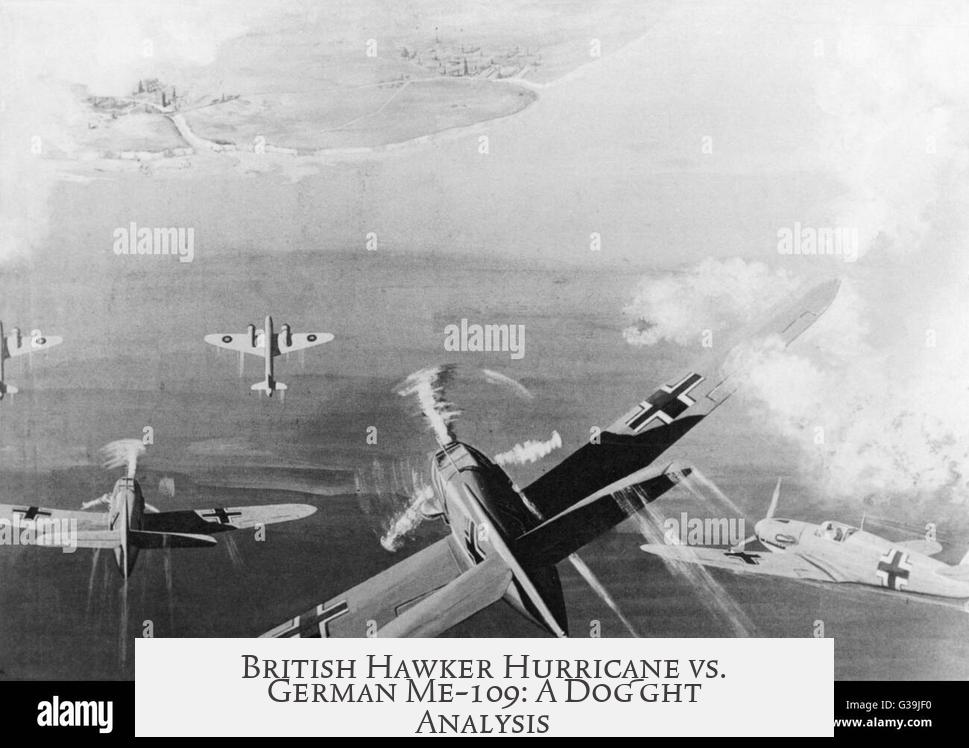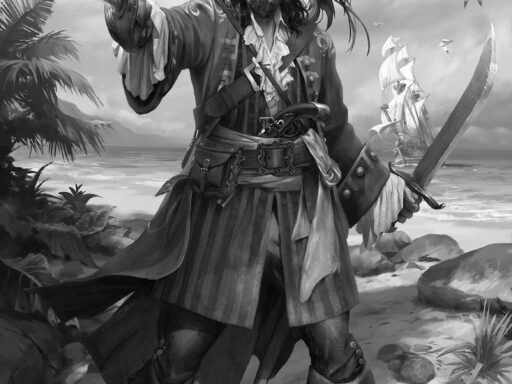British Hawker Hurricane fighters dogfight against the German Messerschmitt Bf 109 (Me-109) using a blend of maneuverability, tactical positioning, and controlled fire rather than pure speed or prolonged turning battles. The Hurricane’s strengths lie in its control, ruggedness, and reliable gunfire, which allow pilots to tactically engage and outlast their opponents in combat.
The Hurricane features a unique combination of maneuverability and stability. Despite having slightly lower climb, level, and altitude performance compared to the Me-109 or the Spitfire, it excels in control and structural resilience. Pilots valued its ease of handling, which allowed for precise aiming during gunfire. Its rugged airframe endured combat strains better, including landing stress and dives, making it dependable on the frontline.
One distinctive Hurricane advantage involves high-speed diving. Pilots could execute a violent full-power corkscrew dive that the Me-109 could not safely replicate without risking structural failure. This maneuver gave the Hurricane a chance to escape tight situations effectively. Unlike the Me-109 and Spitfire, which faced risks of structural damage in high-speed dives, the Hurricane could perform them without serious drawbacks.
The turning ability of the Hurricane compared to the Me-109 is a debated topic. Historically, it is generally accepted that a Hurricane could turn tighter than a Spitfire, and a Spitfire could turn tighter than a Me-109 in standard conditions. This hierarchy offered Hurricanes an edge in close turns since tighter turning helps in gaining firing positions. However, some pilots and German accounts dispute this notion. Skilled Me-109 pilots could deploy leading-edge slats at lower speeds—around 160 mph—to enhance turning and even outperform Hurricanes and Spitfires in this aspect. Thus pilot skill, knowledge of the aircraft’s limits, and combat experience played critical roles in actual dogfighting outcomes.
Rather than relying solely on turning battles, Hurricane tactics emphasized surprise and positional advantage. The ideal engagement involved “bouncing” the enemy from above, out of the sun’s glare, and striking before the opponent detected the attack. This approach minimized the need for prolonged maneuvering duels. Speed in approach and swift, accurate gunfire were prioritized.
According to combat doctrine and pilot accounts, turning was often less critical than securing a positional edge. Pilots focused on accelerating to close range, firing controlled bursts, and disengaging promptly. Many victims never spotted their attackers until it was too late. This reflects the vital role of situational awareness and tactical patience over brute aircraft performance.
Combat records illustrate this approach. One pilot, P/O Allard, described climbing above enemy formation and positioning between the sun and the opponents before attacking. He fired one-second bursts at about 300 yards until visible smoke appeared from the enemy plane. Once the target was damaged, he closed to 100 yards and fired a longer burst, scoring a decisive hit. The enemy aircraft then plunged into the sea, showing how altitude advantage, patience, and precise gunfire combined to bring success.
Summarizing the dogfight dynamics between the Hurricane and Me-109:
- The Hurricane’s maneuverability and ruggedness compensated for weaker speed and climb compared to the Me-109.
- Its unique ability to conduct aggressive corkscrew dives gave it escape options unavailable to Me-109s.
- Turning advantage is situational; pilot skill and use of Me-109’s slats complicated straightforward assumptions.
- Tactical doctrine prioritized surprise attack and altitude advantage over extended turning fights.
- Precise, controlled bursts from eight Browning machine guns were essential to disabling the enemy quickly.
The interaction between Hurricanes and Me-109s was complex and depended on multiple factors beyond pure aircraft specs. Pilot expertise and tactical choices often decided dogfight outcomes. British pilots preferred to leverage their aircraft’s control and survivability, striking swiftly from advantageous positions before evading further combat. This approach balanced the Hurricane’s slower speed against a practical framework for air defense and offense during World War II’s critical aerial battles.
| Aspect | Hawker Hurricane | Messerschmitt Bf 109 |
|---|---|---|
| Speed & Climb | Lower than Me-109 | Higher, superior climb and level speed |
| Maneuverability | Tighter turns, excellent control | Good turns; slats enhanced turning at low speeds |
| Structural resilience | Robust, safe in high-speed dives | Risk of damage in violent dives |
| Armament | Eight Browning machine guns, accurate aiming | Varied, including machine guns and cannons |
| Tactical approach | Surprise attacks, altitude advantage, quick controlled firing | Varied, sometimes relying on speed and slat-assisted turns |
Detailed understanding of how Hurricanes dogfighted Me-109s reveals a complex interplay of pilot skill, aircraft capability, and combat tactics. The Hurricane’s design strengths were leveraged through smart positioning and controlled aggression, challenging the faster but sometimes less structurally forgiving Me-109.
- The Hurricane blends maneuverability and ruggedness to offset speed deficits.
- Diving corkscrew maneuvers offer unique escape opportunities.
- Turning advantages are conditional; pilot skill is decisive.
- Air combat favors surprise and positioning over extended dogfights.
- Effective fire control from Hurricane machine guns disables enemies efficiently.
How Did British Hawker Hurricane Fighters Dogfight Against the German Me-109?
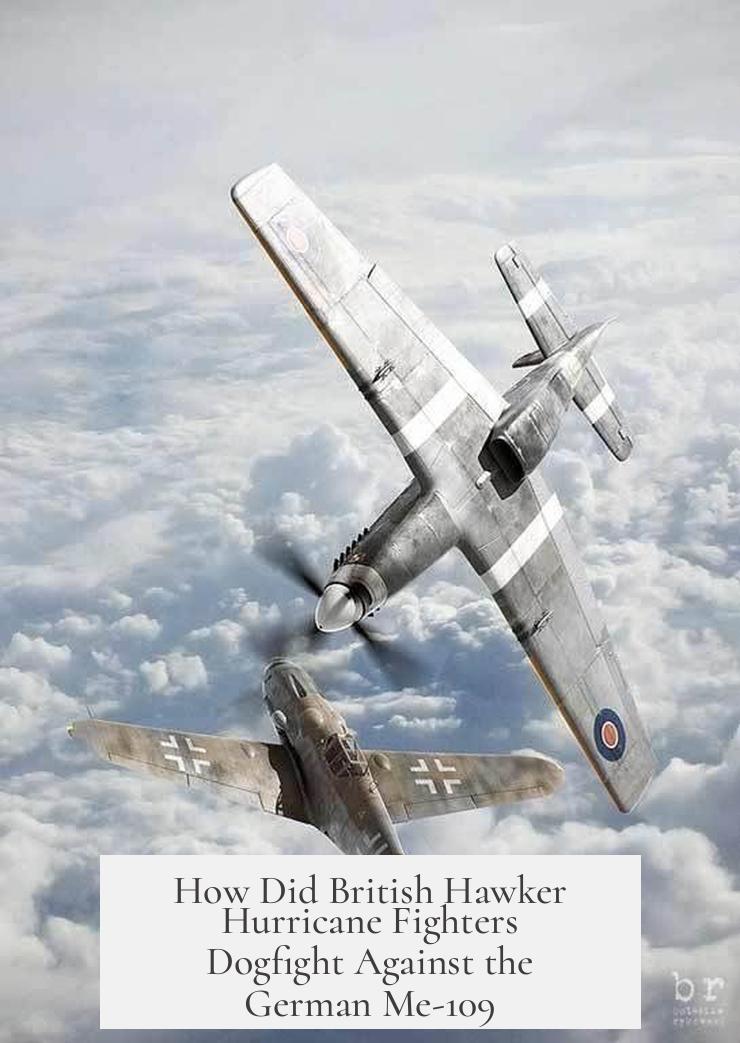
If you’re wondering how the sturdy British Hawker Hurricane matched up against the sleek German Messerschmitt Bf 109 in the skies, the answer lies in a blend of savvy tactics, sturdy design, and pilot skill rather than raw speed or climb rate alone. The Hurricane’s secret weapon? Maneuverability combined with ruggedness and precise firepower. Let’s dive into the story of this iconic air duel and uncover how Hurricanes held their own against arguably superior aircraft.
Imagine the sky as a chessboard where every move counts. The Hurricane wasn’t the fastest or highest climber (those honors went to the more glamorous Spitfire and the Me 109), but it brought a unique mix of qualities that made it a formidable opponent.
Maneuverability That Turned Heads (and Planes)
Roland ‘Bee’ Beamont, a Hurricane ace, famously praised the aircraft’s “exceptional combination of manoeuvrability, rugged strength, stability, ease of control and gun aiming.” Basically, the Hurricane felt like a trusted old friend for pilots—it responded well, made aiming guns easier, and even had “viceless” landings, a very welcome trait after a tight fight.
One of the Hurricane’s cool moves was the terrifying full-power corkscrew dive. If a pilot found themselves in a tight spot, they could push the Hurricane into this violent spiral dive, a trick no Me 109 could safely follow without risking structural failure. Meanwhile, both the 109 and even the Spitfire earned shaky reputations for falling apart in such dives. This dive wasn’t just flashy; it was a tactical escape hatch.
Turning Circles and the Myth of the Handbrake Turn
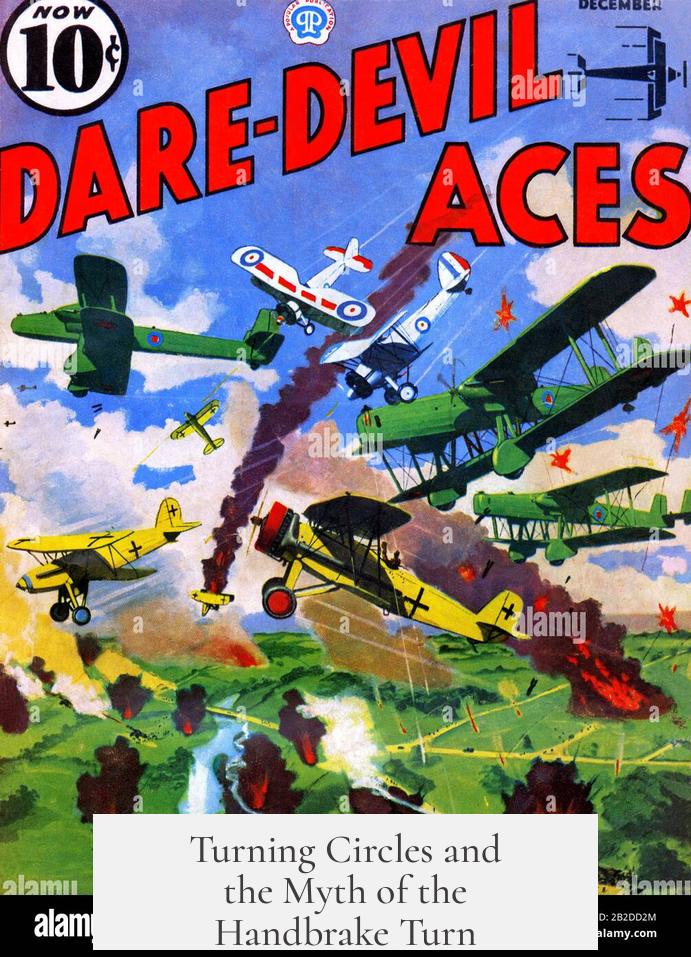
For ages, folks have debated which plane turned tighter: the Spitfire, the Hurricane or the 109? The usual story goes like this: the Spitfire could out-turn the 109, and the Hurricane could out-turn the Spitfire. But wait, there’s a curveball.
Tom Neil, a Hurricane pilot himself, says that’s oversimplified. According to him, the Me 109 could pop out its slats at low speed—yes, those little wing flaps you didn’t know could help with tight turns—and out-turn both British planes. Pilot skill, confidence, and knowing the aircraft’s limits mattered as much as or more than the numbers on paper.
So, despite the Hurricane’s reputation, it was not invincible in a turning contest. But that didn’t mean Hurricane pilots wanted to throw turning battles just to prove who’s boss.
Forget the Endless Circles: Speed and Surprise Win the Day
If dogfighting was all about who could out-turn who, it would be a boring endless dance. Instead, WWII fighter pilots aimed for stealth, advantage, and quick strikes. Surprise was king. Catch your opponent from above, out of the sun—and hit hard before they even knew you were there. Four out of five enemy pilots reportedly never even saw their attackers. Ouch.
Tom Neil echoes this mindset: “Who gives a bugger about turning? You never need to turn. Fly like hell, catch the other fellow, fire your guns, and disappear.” The key weapon after maneuverability turned out to be *speed* and *positional advantage*, not endless dogfight circles.
A Real Combat Snapshot: P/O Allard’s Account
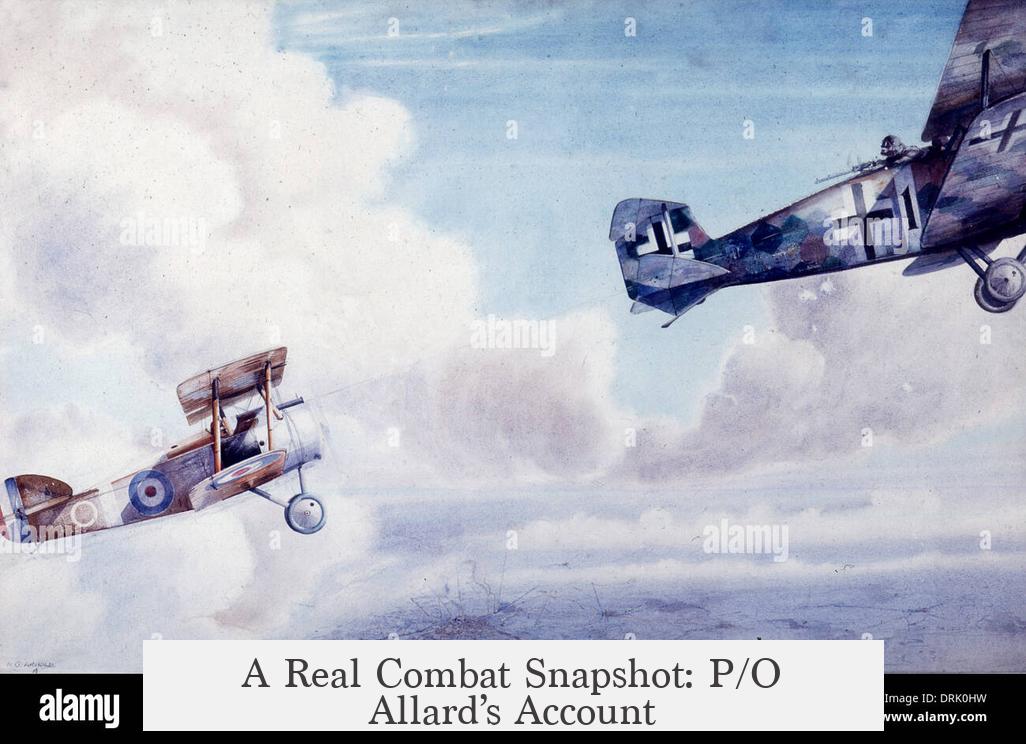
Let’s paint a picture from a real pilot’s encounter. P/O Allard of 85 Squadron was ordered to patrol his base and was soon vectored to intercept enemy planes. He climbed 1,000 feet above the enemy and, crucially, between them and the sun—blinding them while giving him the perfect angle.
He attacked from about 300 yards with short, controlled gun bursts until smoke trailed from the enemy fighter. Then he closed the gap to 100 yards for a longer burst, which sent the Me 109 crashing into the sea. His calm, calculated attack reflects the Hurricane’s strengths: sturdy platform, accurate guns, and smart positioning rather than risky, prolonged battles.
What Can We Learn from This?
- Hurricane Strengths: Rugged design means it can take hits and keep flying. Excellent control and stable aim make hitting a target easier even if you’re being juggled in a fight.
- Unique Tactic: High-speed corkscrew dives let pilots shake off pursuers who couldn’t handle the strain. That’s a life-saving edge.
- Turning Debates: Despite the Hurricane’s reputation, turning ability alone didn’t decide dogfights. The Me 109’s slats gave it tight-turning ability, proving pilot skill and tactics are vital.
- Strategy Over Stamina: Avoiding prolonged turning battles was smart. Element of surprise and energy advantage determined quick kills.
- Gun Power: Eight machine guns firing in bursts packed enough punch to damage or destroy enemy planes when combined with precise aiming.
In other words, the Hurricane wasn’t just a big, slow the tank of the skies. It had a *playbook* that combined solid flying traits with smart tactics and sharp gunnery. Pilots leveraged the aircraft’s strengths and avoided its weaknesses, making it a fearsome foe against the Me 109.
Why Does This Matter Today?
Looking back at the Hurricane vs. Me 109, we can see a bigger lesson: Machines are important, but knowing how to use them matters far more. It’s a reminder that success often comes from understanding your tools AND your opposition, and adapting your strategy accordingly.
So, next time you think about dogfights, remember: The Hurricane’s story is less about who had the fastest plane and more about who played their hand best—and that’s a lesson that goes beyond the cockpit.
